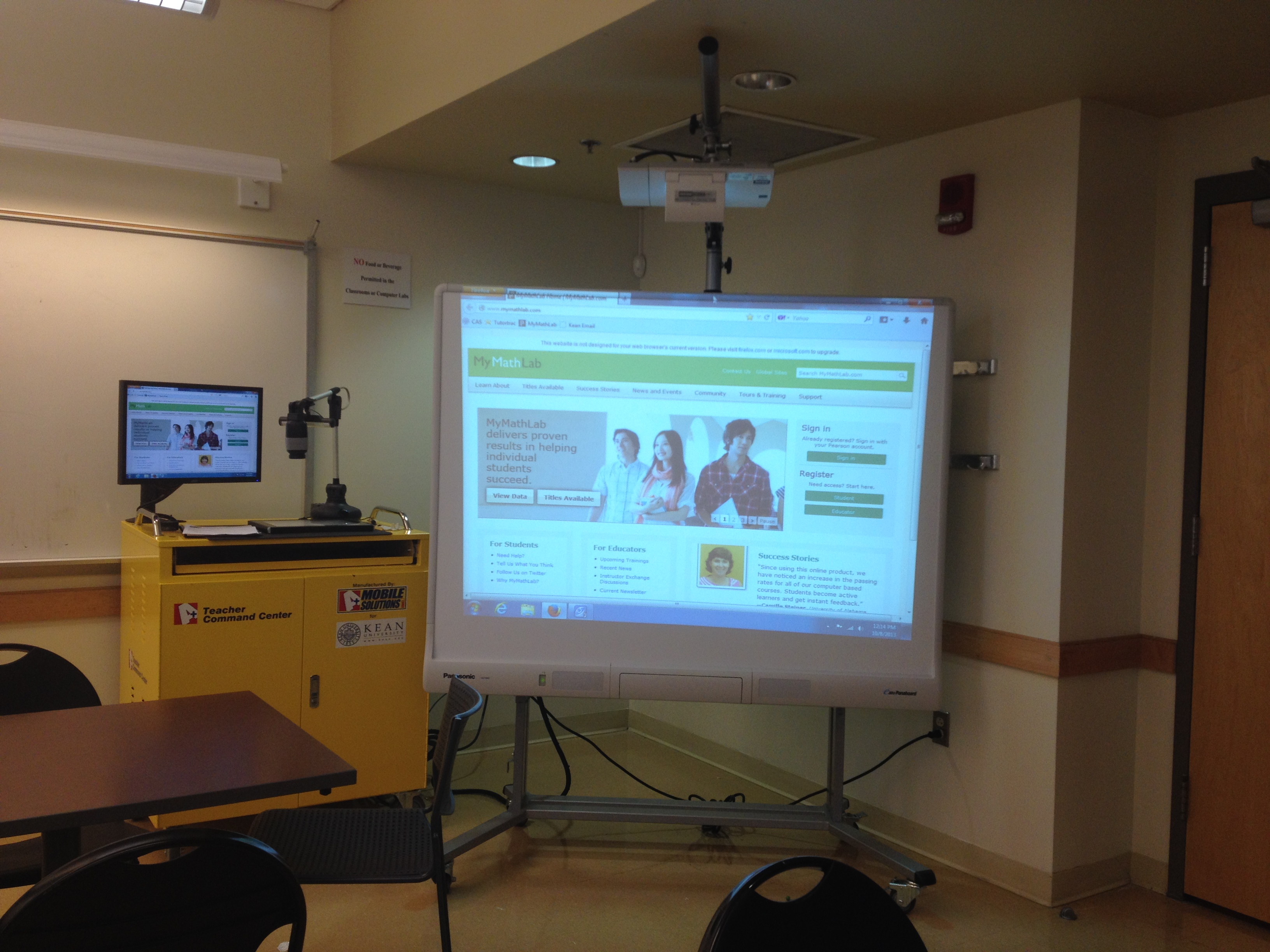By: Marisa Gallagher and Keanu Austin
The Basic Algebra remedial course that 600 freshmen are taking has doubled in size to about 50 students per class because of a new teaching method implemented this semester.
Kean’s general education department has adopted the math emporium model for its Basic Algebra course, which is being taught using a Smart Board and laptops. Twelve sections for the course are running, all with a capacity of 50 students, according to data from KeanWise’s course registration system accessed in mid-September.
Up until the previous semester, the Basic Algebra course had no more than 25 students per section. The course is required for new freshmen who failed high school math or performed poorly on placement tests.
“Last semester, I had 80 students in four courses. This semester, I have 140 students in four courses,” said a math professor when asked about the change in her class sizes.
The math emporium model is designed to accommodate large learning groups. The National Center for Academic Transformation’s website provides suggested methods for teaching the emporium model and offers information on the type of training instructors need to teach the method effectively.
The NCAT’s website stresses that instructors need adequate training to understand the new philosophy of teaching and redesigned setting involved in the emporium model.
“I am not sure Kean has made the commitment to train the instructors,” said Dr. Kathleen Henderson, President of the Kean University Adjunct Faculty Federation, in an email. “The suddenness with which this was introduced made it seem as if it was a decision made to save money more than anything else.”
According to Henderson, the decision to increase class sizes was supposed to be done through collegial procedures established at Kean, which she charged was ignored in this case.
Discussion by the administration to increase class sizes, said Henderson, should have been run by the following university faculty senate committees: University Curriculum Committee, Academic Standards Committee, Academic Technology and Multimedia Committee, Student Retention Committee and Assessment Committee.
Requests to the math department and the general education department for information and interviews to discuss the changes were referred to university relations. Three visits to the office of university relations, as well as emails to three different people on the staff were unanswered.
“These are students who could not pass basic high school math the first time,” said Henderson in an earlier email. “They need individual remediation.”
Henderson added that size does not necessarily matter in an emporium. “If well-designed, it can support large classes. However, the trick is to make sure it is structured properly,” she said. “If you are saying that the large courses use adjuncts and they have not been given proper training, then that is a problem.”
The NCAT highlights the importance of implementing required lab hours, which Kean has done. Each Basic Algebra student is required to attend 10 tutoring hours per semester. They and students from different math courses can also practice their skills on a laptop anytime during the 18 hours of open lab per week.
